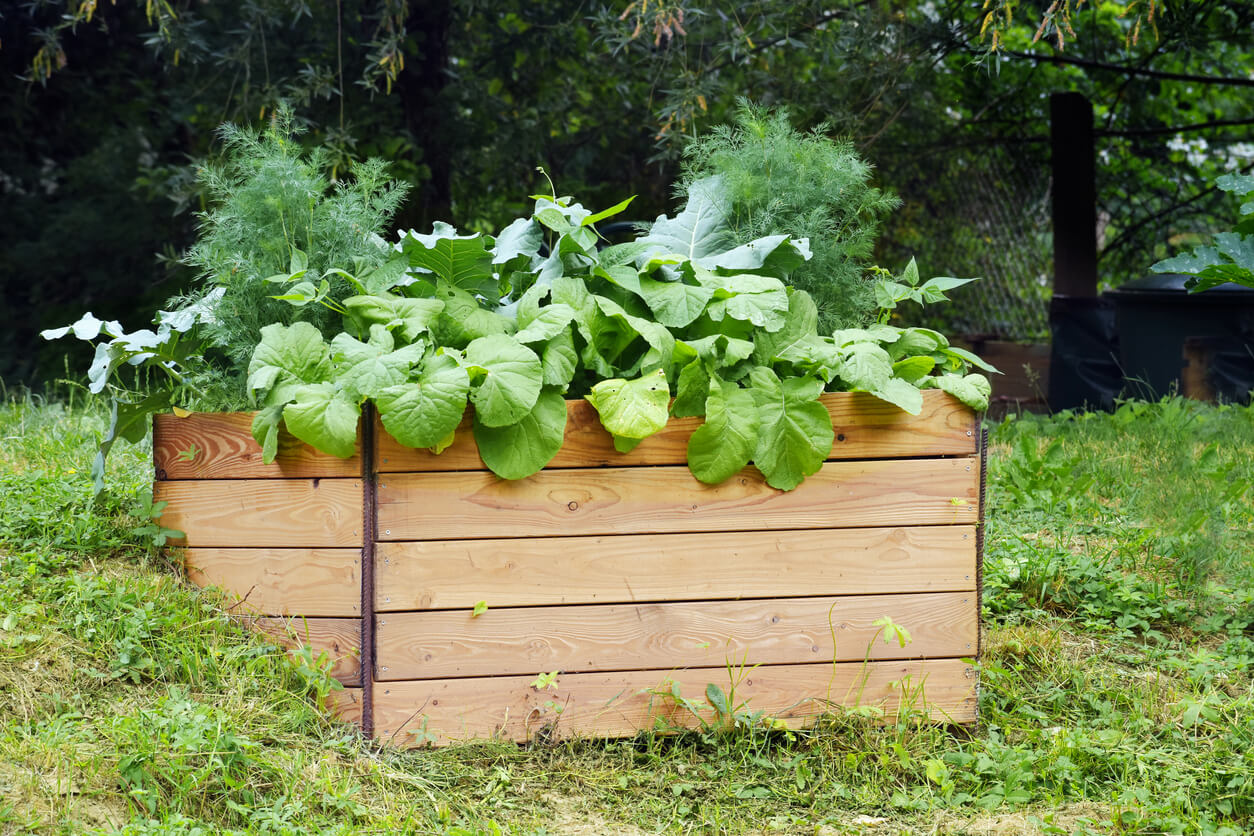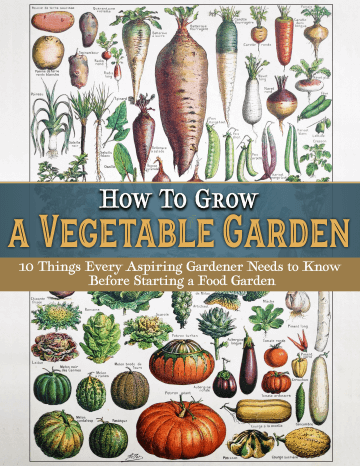
What’s the right size for raised garden beds? That’s a great question! The answer? Well, it’s not complicated, but it does take some consideration.
Of the many wonderful aspects of a raised bed garden, one of the things I love most is that they can accommodate a variety of gardeners. While some of us are agile and able to get on the ground to weed, plant, and tend our vegetables, that’s not the case for everyone. However, raised garden beds make gardening much more accessible.
A raised bed allows people with all kinds of mobility issues to garden. Plan it well, and gardeners in wheelchairs, gardeners with bad backs, gardeners with bad knees, kids, or gardeners who just don’t like getting dirt on their pants can all enjoy the produce that comes from a raised bed.
Raised beds can accommodate soil issues, too. Whether you have clay soil, contaminated soil, or a space covered in concrete, a raised bed can give you the option of growing your own food.
As you can imagine, that means there isn’t one “right” size for raised garden beds. There is, however, a right size for you. Here’s how to figure out what that is.
Discover 10 top tips for growing, harvesting, and enjoying fruits, vegetables, herbs and more from your home garden—when you access the FREEBIE How to Grow a Vegetable Garden, right now!

How to determine the best size for raised garden beds in your garden
For many raised beds, the goal is to be able to access your vegetables without stepping into the garden. Given that parameter, location is one factor in determining the right size for raised garden beds. Ideally, you’ll be able to access the garden from each side, but that’s not always the case.
With that in mind, if you can access the bed from both sides, the University of Georgia Extension suggests “raised beds that are 3 feet wide for children and 4 feet wide for adults. If providing wheelchair access, plan raised beds that are 2 feet wide for children and 3 feet wide for adults.”
That said, I’ve seen some gorgeous raised beds that are only about 18 inches wide. Gotta work with the space you have, right?
Moving on with our three dimensions, what’s the best size for raised garden beds when it comes to length? That’s not very important from the gardening end of things. The proper length for a raised bed is really about the space you have and how far you want to move around it.
What may be the most crucial factor is depth or height. This is also where you need to consider how to combine your needs with the needs of your plants and the constraints of your space.
Let’s start with whether or not wheelchair access is a consideration. The city of Seattle Community Gardening Program states that “wheelchair modified beds should have a maximum height of 34 inches.” That’s also a good height for people who aren’t as able to bend over and would prefer to garden standing up.
However, nearly 3 feet of soil can come with a hefty price tag. And, for many crops, you only need around 18 inches of soil. One option here is to raise your raised bed. Build or buy a tabletop style or elevated raised bed like this one or this one.
You might need a deeper bed if you’re growing on top of concrete, gravel, or another hard surface, and you want to grow vegetables that require more soil, like corn, indeterminate tomatoes, melons, and other vegetables with deep roots. If that’s the case, however, you don’t need to go with the same size for raised garden beds all around. You can have some that are shallower and some that are deeper. Remember, that soil costs money!
So, where does this leave us?
Ultimately, the “right” size for a garden bed is one that works best for you, with consideration of your landscape and constraints. But if you want actual numbers and are looking for something versatile enough for most gardeners, the best size for raised garden beds is …
Between 3 to 4 feet wide, with a length of 6 to 8 feet. As far as depth, 12 to 18 inches will accommodate most roots, and a truly raised bed with enclosed bottom should have a top-height of 3 feet.
Now then, who’s ready to go buy some lumber?
What size do you find best for raised bed gardens?
Discover 10 top tips for growing, harvesting, and enjoying fruits, vegetables, herbs and more from your home garden—when you access the FREEBIE How to Grow a Vegetable Garden, right now!
Note: This post contains affiliate links, and we may make a small commission when you make a purchase after clicking them. However, this post is based on honest and true reviews of the products above.





I get incredible yields and two or three seasons of veggies, herbs and flowers with minimal weeding using the square foot gardening method in four raised beds size 4’x6’. Made from 10” wide “substandard” grade cedar shingles with 4” square posts in the corners, these beds have lasted 9 years so far and have no signs of deterioration. We removed the sod, placed the beds, used several layers of wet newspaper and cardboard, followed by 18-20” of brush and tree limb debris as bottom fill, which broke down over time—free compost in the making, and a considerable cost savings. The top 12-14” was a mixture of organic garden soil, chicken, cow, mushroom compost. all organic. Since this is my 10th season, it has averaged to $40/year and all I do is replenish the top layer annually with my own compost pile (of food scraps and leaves). I did learn these beds are not ideal for summer squash because there are far better high yield vegetables, edible flowers and herbs in the 24 one foot squares. I grow tomatoes, leeks, rainbow chard, carrots, parsnips, peppers, kale, broccoli, cabbage, cauliflower, rosemary, sage, basil (several kinds), marjoram, peas, thyme, pole beans and cauliflower. I typically save seeds and now enjoy a diverse harvest for minimal cost or weeding effort.
That sounds amazing! I would love to see pictures of your set up! Sounds like you could teach a course in how to do that. Aren’t shingles rather thin? Have the shingles lasted ten years? And what is your watering method? Thank-you.
Anything with dirt in it and holes or seepage at the bottom will drain and the water hose is a handy way to clean up. If you lose too much soil though, it can be easily be replenished. What I’d give to have just 2 waist-high raised beds. The only way I can grow now is hydroponically and getting up and down steps is a real challenge, so……I grow inside now but that has its lovely points too and at least plants can be all around you and the maintenance is very easy!
Can I build a raised bed on the concrete patio floor? My neighbor has one on the concrete floor. On rainy days a lot of soil flooded out of the container. Is this good idea? Do you have any suggestions? I imagine many people live with concrete patio garden.
You might find this post answers your question.
https://foodgardening.mequoda.com/daily/garden-design/can-you-build-a-garden-bed-on-concrete-5-ways-to-prep-before-you-plant/